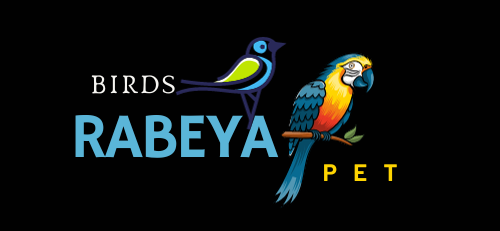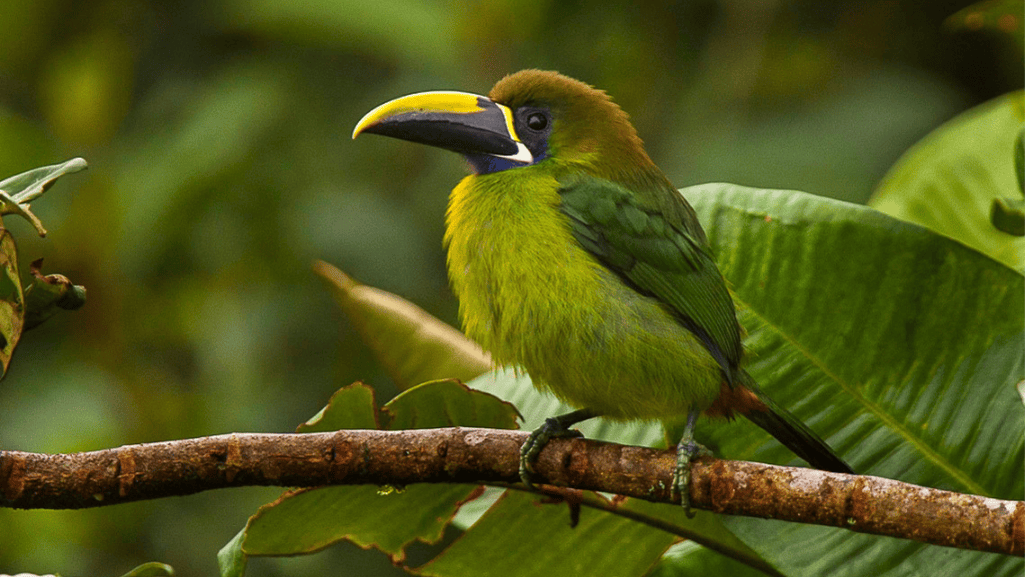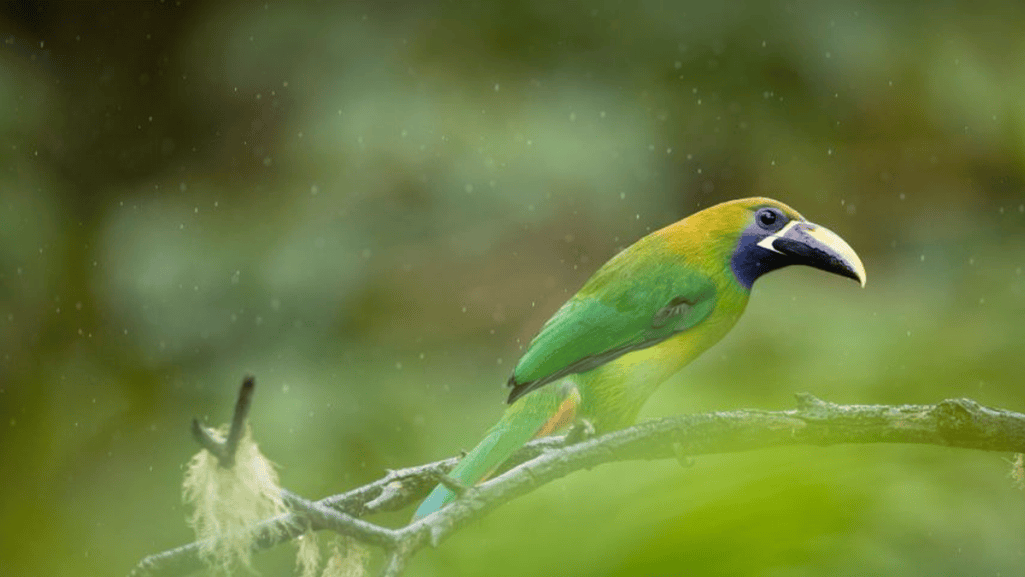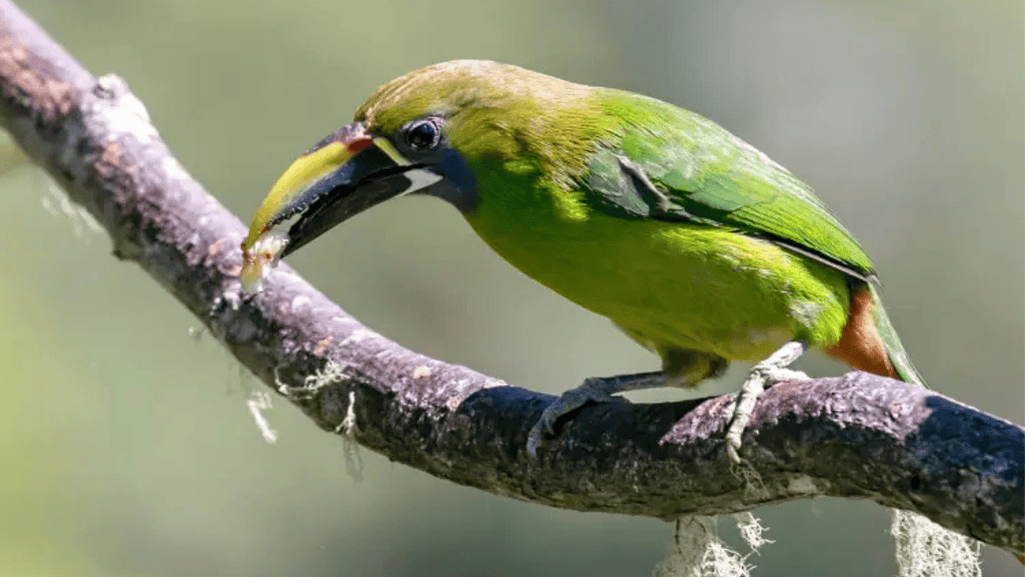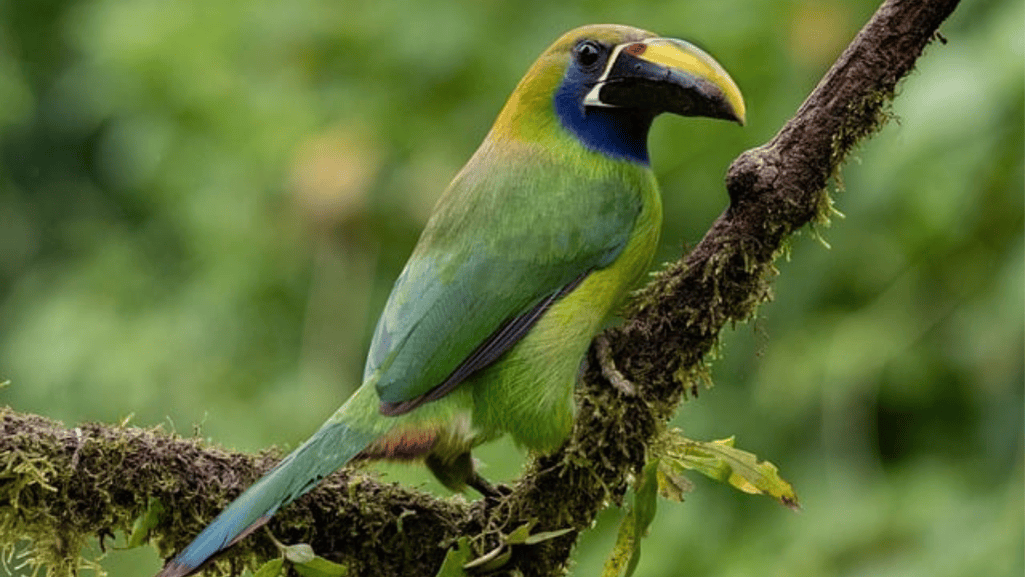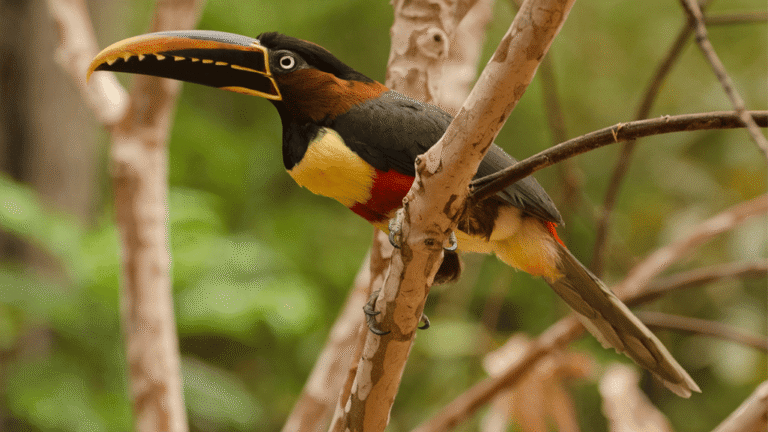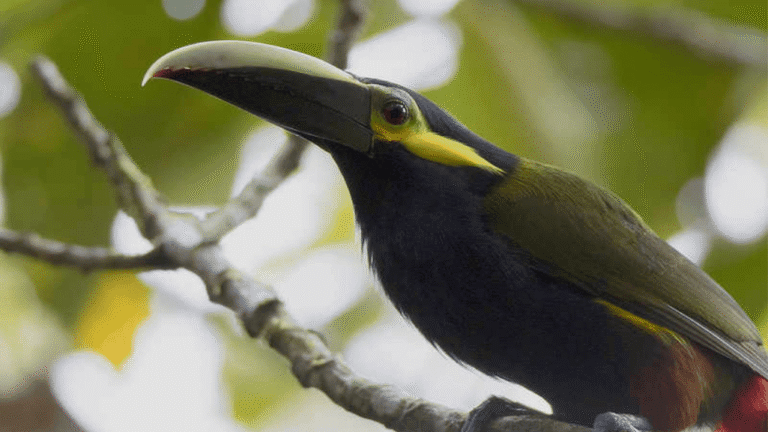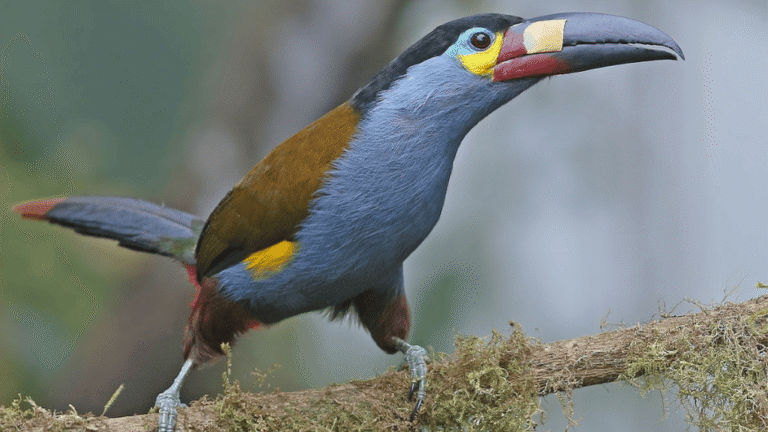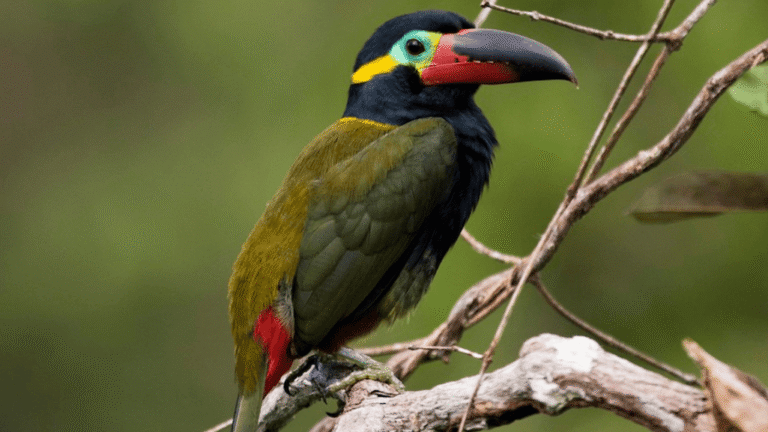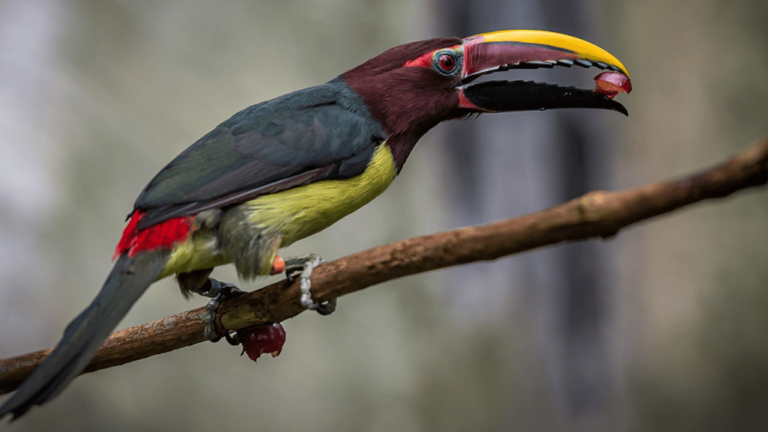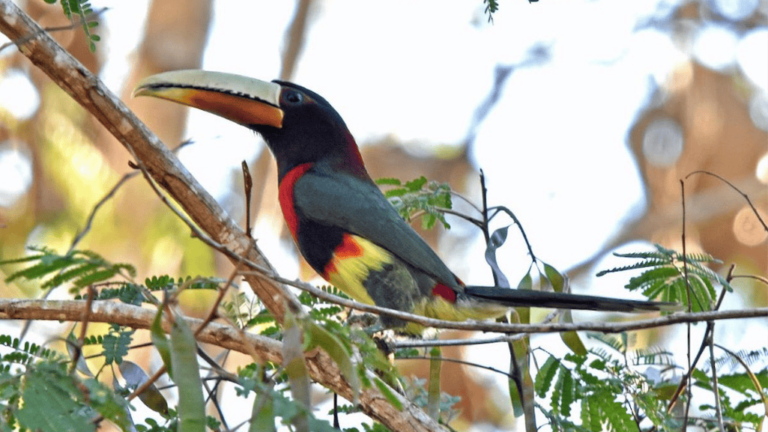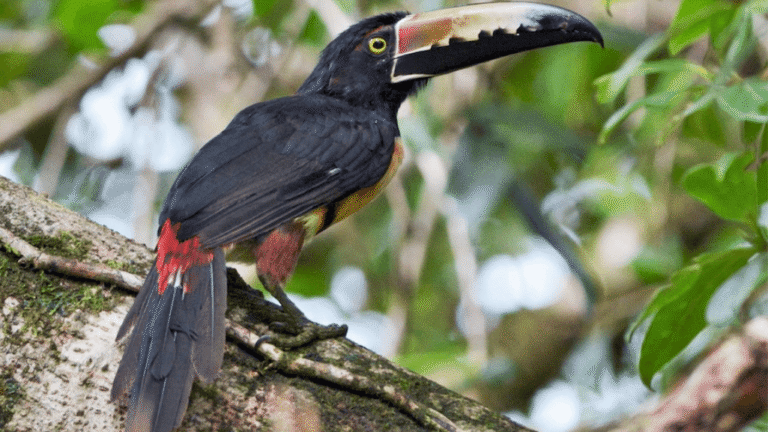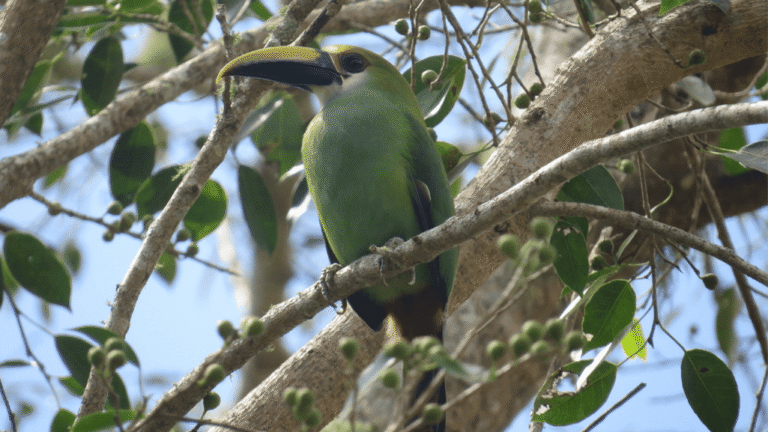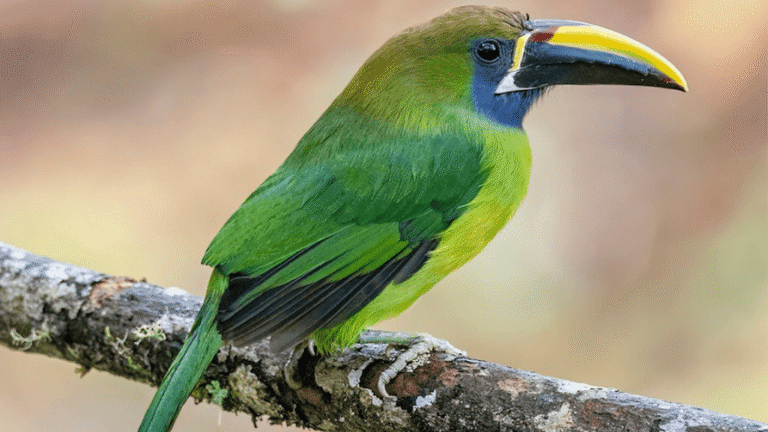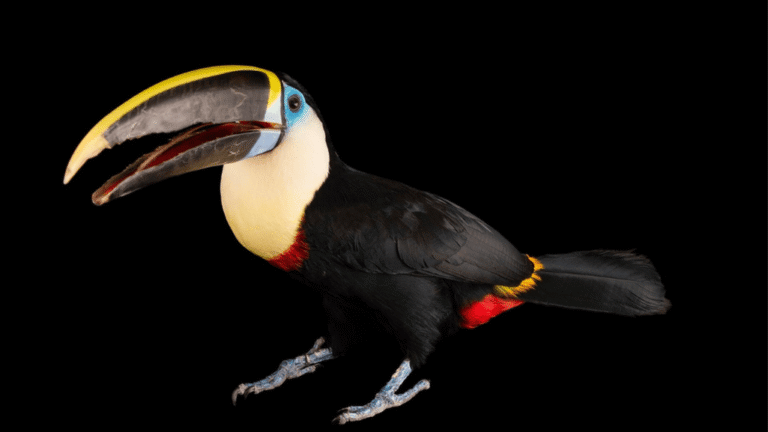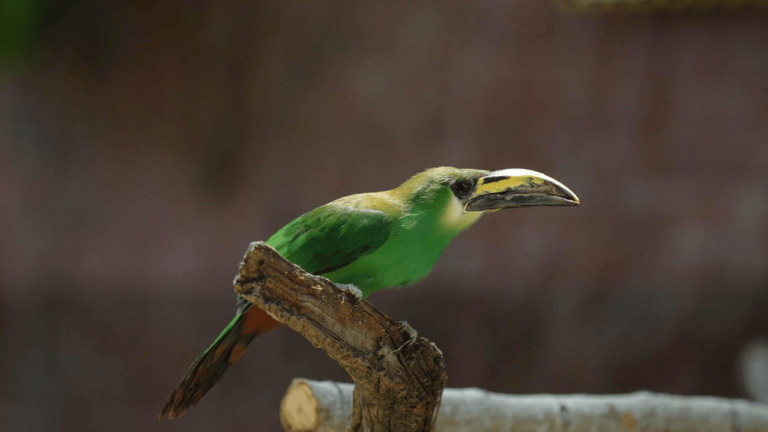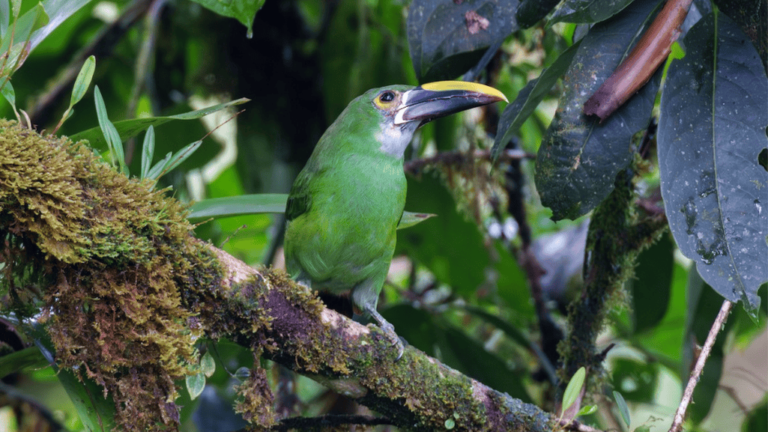The Blue throated toucanet is a vibrant bird species found in Costa Rica, Panama, and northwestern Colombia. Formerly considered a subspecies of the Emerald Toucanet, it is now recognized as a separate species. With its large, black and yellow bill, stunning blue throat, and green plumage, the Blue-throated Toucanet is a sight to behold.
This charismatic toucanet primarily inhabits humid montane forests, but can also be found in secondary forests and plantations. Its diet consists of a variety of fruits, insects, and it has even been observed preying on the eggs and hatchlings of other bird species. Nesting in tree cavities, the Blue-throated Toucanet lays a clutch of three or four eggs, actively involved in the incubation process.
Although habitat destruction poses a potential threat, the population of the Blue-throated Toucanet is considered stable, currently classified as of Least Concern by the International Union for Conservation of Nature (IUCN).
Key Takeaways
- The Blue-throated Toucanet is a separate species from the Emerald Toucanet.
- It has a distinctive appearance with a black and yellow bill, green plumage, and a blue throat.
- The Blue-throated Toucanet primarily inhabits humid montane forests but can adapt to various habitats.
- Its diet consists of fruits, insects, and even eggs and hatchlings of other bird species.
- The population of the Blue-throated Toucanet is currently stable.
Range and Description
The Blue-throated Toucanet, also known as Aulacorhynchus caeruleogularis, is a striking bird species found in Costa Rica, Panama, and northwestern Colombia. Its range spans from 800 to 3,000 meters in Costa Rica and 600 to 2,400 meters in Panama.
This toucanet species showcases a beautiful green plumage with a bronze tinge on the crown, making it a visually captivating bird in its natural habitat. One of its distinct features is its blue throat, which adds a pop of color to the overall appearance. The bill of the Blue-throated Toucanet is black with a yellow stripe along the upper maxilla and a white strip at the base. It has a deep blue lower face and throat, complemented by chestnut undertail coverts and the underside of the tail.
The adult Blue-throated Toucanet measures between 29 to 37 cm in length and has an average weight ranging from 120 to 185 grams.
| Attribute | Description |
|---|---|
| Range | 800 to 3,000 meters in Costa Rica 600 to 2,400 meters in Panama |
| Plumage | Green with bronze tinge on the crown Blue throat, deep blue lower face and throat, chestnut undertail coverts and underside of the tail |
| Bill | Black with yellow stripe along the upper maxilla and white strip at the base |
| Size | 29 to 37 cm in length |
| Weight | 120 to 185 grams |
Behavior and Diet
The Blue-throated Toucanet is a sociable bird species that often congregates in groups of up to 10 individuals. It displays fascinating behavior patterns that revolve around its foraging and feeding habits.
When it comes to foraging, the Blue-throated Toucanet utilizes a technique called gleaning. This involves delicately picking fruits and insects while perched on branches. This method allows the toucanet to carefully select its food items without expending excessive energy.
This bird species has an eclectic diet that includes a variety of food sources. Its primary food source is fruits, which it consumes in abundance. The Blue-throated Toucanet demonstrates a preference for ripe fruits, as they provide essential nutrients and energy for its daily activities.
In addition to fruits, the Blue-throated Toucanet supplements its diet with insects. This includes beetles, ants, termites, and other small arthropods. The consumption of insects provides the toucanet with protein and helps maintain a well-balanced diet.
Interestingly, the Blue-throated Toucanet has been observed preying on the eggs and hatchlings of other bird species. This opportunistic behavior demonstrates its adaptability and ability to exploit available food resources.
Furthermore, the Blue-throated Toucanet has been known to display a carnivorous side by feeding on small vertebrates such as lizards and snakes. This behavior indicates its ability to adapt to different environmental conditions and take advantage of opportune moments to diversify its diet.
When it comes to vocalizing, the Blue-throated Toucanet has a distinctive, loud call that can be heard from a distance. This call is often repeated for extended periods, serving as a form of communication and territorial declaration.
In summary, the Blue-throated Toucanet is a sociable bird species with fascinating feeding habits. Its gregarious nature, coupled with its gleaning foraging technique, allows it to thrive on a diverse diet consisting primarily of fruits and insects. However, its opportunistic behavior also leads to the consumption of eggs, hatchlings, and even small vertebrates. By adapting to various food sources, the Blue-throated Toucanet demonstrates its ability to survive and flourish in its natural habitat.
Blue throated toucanet
The Blue-throated Toucanet (Aulacorhynchus caeruleogularis) is primarily found in humid montane forests in Costa Rica, Panama, and northwestern Colombia. It is well-adapted to these habitats, thriving in the lush surroundings. In addition to montane forests, the Blue-throated Toucanet can also be found in secondary forests, shrublands, pastures, and plantations. This adaptability allows the species to explore different environments and utilize available resources.
Despite the potential threat of habitat destruction due to human activities and deforestation, the Blue-throated Toucanet population is currently believed to be stable. Conservation efforts have played a crucial role in protecting their habitat and ensuring their survival. The species is listed as of Least Concern by the International Union for Conservation of Nature (IUCN), indicating that it is not facing an immediate risk of extinction. However, continued conservation measures are necessary to maintain and monitor the population status of these magnificent birds.
To understand the importance of conserving the Blue-throated Toucanet habitat, it is essential to recognize its role in maintaining ecological balance. The toucanet’s presence contributes to seed dispersal, which aids in forest regeneration and sustains other plant and animal species. Protecting their habitat not only benefits the Blue-throated Toucanet but also supports the overall biodiversity of the region.
Conservation organizations and local communities have been working together to safeguard the Blue-throated Toucanet’s habitat through initiatives such as protected areas, reforestation projects, and public education programs. These efforts aim to raise awareness about the importance of preserving the natural environment and ensure a sustainable future for both wildlife and humans.
Blue-throated Toucanet Habitat Summary
| Habitat Type | Locations |
|---|---|
| Humid Montane Forests | Costa Rica, Panama, and northwestern Colombia |
| Secondary Forests | Throughout the natural range |
| Shrublands | Throughout the natural range |
| Pastures and Plantations | Throughout the natural range |
Breeding and Nesting
The Blue-throated Toucanet has a specific breeding season that occurs from March to August. During this time, the toucanet engages in the important process of reproduction, ensuring the survival of its species. Understanding their breeding and nesting habits can provide valuable insights into their lifecycle and behavior.
Nesting Habits
The Blue-throated Toucanet builds its nest in tree cavities, which can either be naturally formed or abandoned by woodpeckers. These tree cavities serve as a safe and secure location for the toucanet to lay its eggs and raise its young. The nesting heights can reach up to an impressive 27 meters, providing protection against potential threats.
Clutch Size
The typical clutch size of the Blue-throated Toucanet is three or four eggs. However, it is crucial to note that the clutch size can range from one to five eggs in some cases. This flexibility in clutch size ensures the continuation of the species even if some eggs do not successfully hatch or survive. Each egg represents a potential new member of the population, contributing to the overall sustainability of the Blue-throated Toucanet.
Parental Care
Both parents of the Blue-throated Toucanet play an active role in the incubation of the eggs. They take turns in meticulously caring for the eggs, ensuring optimal conditions for proper development. The incubation period lasts approximately 16 days, during which the parents remain dedicated to protecting and nurturing their offspring.
Once the eggs hatch, the parents continue to provide devoted care to their young. The nurturing and feeding of the fledglings occur for a period of 42 to 45 days after hatching, allowing the young toucanets to mature and gain the necessary skills to survive in their natural environment.
Understanding the Blue-throated Toucanet’s breeding and nesting habits provides us with a glimpse into their life cycle and the effort they put into ensuring the continuation of their species. By protecting their nesting sites and preserving their natural habitats, we can safeguard the future of the Blue-throated Toucanet and maintain the balance of the ecosystems they inhabit.
Finding and Observing Blue-throated Toucanets
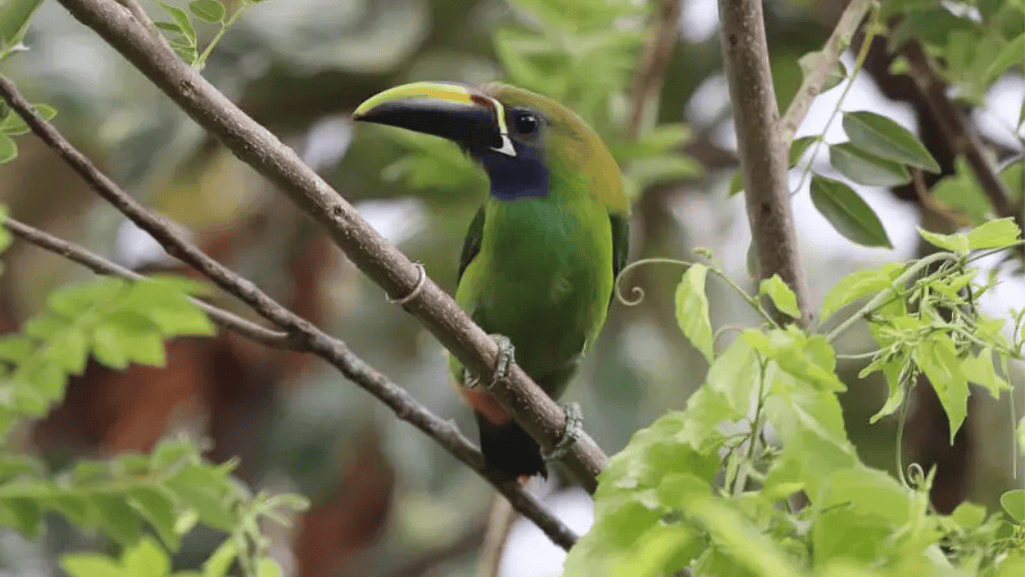 To catch a glimpse of the stunning Blue-throated Toucanets, head to the foothills and low mountains of the central and south Pacific regions of Costa Rica. These vibrant birds can also be spotted in the Arenal Volcano area. Additionally, the Osa Peninsula offers a great opportunity to observe these fascinating creatures in their natural habitat.
To catch a glimpse of the stunning Blue-throated Toucanets, head to the foothills and low mountains of the central and south Pacific regions of Costa Rica. These vibrant birds can also be spotted in the Arenal Volcano area. Additionally, the Osa Peninsula offers a great opportunity to observe these fascinating creatures in their natural habitat.
However, locating Blue-throated Toucanets can be a challenge as they prefer higher elevations and dense forests. Their natural camouflage and ability to blend seamlessly with the lush green foliage make them masters of disguise. Patience and a keen eye are essential for spotting these elusive birds.
Blue-throated Toucanet Observation Tips
- Visit early mornings or late afternoons when toucanet activity is higher.
- Listen for their distinct calls, which can help guide you towards their vicinity.
- Look for movement and unusual colors among the leaves; the flash of blue or yellow may lead you to a hidden toucanet.
- Stay quiet and still to avoid scaring them away.
- Bring binoculars for a closer look at their stunning plumage.
- Consider hiring a local guide for expert assistance in finding these captivating birds.
By following these tips and exploring the recommended areas, you increase your chances of experiencing memorable Blue-throated Toucanet sightings. Remember to respect their natural habitat and observe them from a safe distance to ensure their conservation and well-being.
Now that you know where to find them, let’s explore the fascinating behavior and diet of Blue-throated Toucanets in the next section.
Conclusion
The Blue-throated Toucanet, with its striking black and yellow bill, green plumage, and blue throat, is a vibrant bird species that can be found in Costa Rica, Panama, and northwestern Colombia. This toucanet species is known for its gregarious behavior, often gathering in small groups, and its diverse diet that includes fruits, insects, and even small vertebrates.
While the Blue-throated Toucanet primarily inhabits humid montane forests, it is adaptable and can be found in secondary forests, shrublands, pastures, and plantations. This flexibility in habitat selection contributes to its stable population status, with the species currently classified as of Least Concern by the IUCN.
With its distinct appearance and fascinating behaviors, the Blue-throated Toucanet is a captivating bird species to observe in nature. Its presence adds color and character to the forests it inhabits, making it a true gem of Central and South America’s avian diversity.
FAQ
What is the scientific name of the Blue-throated Toucanet?
The scientific name of the Blue-throated Toucanet is Aulacorhynchus caeruleogularis.
Where is the Blue-throated Toucanet found?
The Blue-throated Toucanet is found in Costa Rica, Panama, and northwestern Colombia.
What is the appearance of the Blue-throated Toucanet?
The Blue-throated Toucanet has green plumage with a bronze tinge on the crown, a blue throat, and a black and yellow bill.
What is the habitat of the Blue-throated Toucanet?
The Blue-throated Toucanet primarily inhabits humid montane forests but can also be found in secondary forests, shrublands, pastures, and plantations.
What is the diet of the Blue-throated Toucanet?
The Blue-throated Toucanet feeds on fruits, insects, and occasionally preys on eggs and hatchlings of other birds.
What is the conservation status of the Blue-throated Toucanet?
The Blue-throated Toucanet is classified as of Least Concern by the IUCN, indicating a stable population.
How does the Blue-throated Toucanet breed and nest?
The Blue-throated Toucanet nests in tree cavities and lays a clutch of three or four eggs. Both parents take turns incubating the eggs, and fledging occurs around 42 to 45 days after hatching.
Where can I find and observe Blue-throated Toucanets?
Blue-throated Toucanets can be found in the foothills and low mountains of the central and south Pacific regions of Costa Rica and in the Arenal Volcano area. The Osa Peninsula is also a good spot to find them.
What is the conclusion about the Blue-throated Toucanet?
The Blue-throated Toucanet is a vibrant bird species with a unique appearance and interesting behavior. It primarily inhabits montane forests but can adapt to different habitats. The population is currently stable, and it is classified as of Least Concern by the IUCN.

